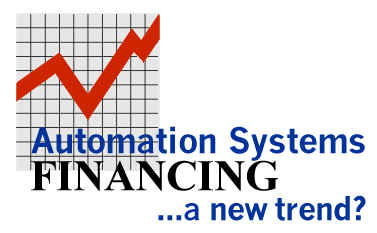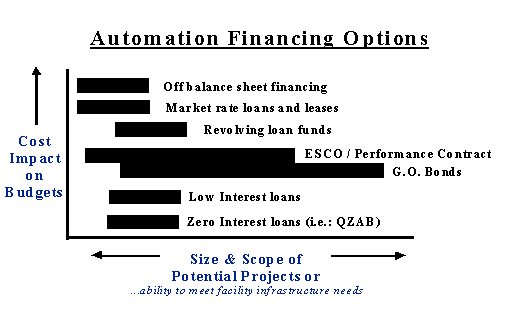
|
John J. "Jack" Mc Gowan, Now is the time to become a little more aware of the financing options and present these to owners as solutions. |
AutomatedBuildings.com
|
[an error occurred while processing this directive] |

|
John J. "Jack" Mc Gowan, Now is the time to become a little more aware of the financing options and present these to owners as solutions. |
The consensus seems to be unanimous; the United States is in an economic downturn, and for controls contractors this is clearly evident because the bid market is drying up and customers are cutting back on capital spending. This economic climate calls for some new and creative approaches to selling systems. Fortunately, the banking industry is very interested in financing projects. This means that contractors may also have to overcome some old and familiar objections from customers who say they simply don't have the money. This means the only way to sell some projects will be to offer a finance option. Clearly this is not new, but all indications are that automation financing is about to become much more popular again. As stated in previous articles Negotiated sales will also be necessary and it could change the approach contractors take in establishing relationships with the customer, but for now the focus is on financing.
|
|
|
|
|
|
|
|
|
|
|
|
|
|
|
|
|
[an error occurred while processing this directive] |
This article can not explore all of the financial options available to finance energy and automation projects. The approach to address system enhancements is to develop System Master Plans, and Capital Improvement Plans typically for a five period, and to identify sources of funding to complete the plan.
[an error occurred while processing this directive]Commercial and industrial customers are most familiar with funding from operations or short term debt instruments such as leases and loans. The most common sources of capital debt financing for government, revenue bonds and general obligation bonds, are very well understood by public customers. These bonds are debt and the owner will pledge, or secure the bond, with a promise to use a specific source of repayment. Bond financing is effective and there is comfort with this approach, however there are some issues as well. First, it is not always a cost-effective way to finance small capital projects as the administrative and bond counsel costs are prohibitive below approximately $5 million. Other types of short-term debt may be used for smaller projects such as bank loans, revenue-anticipation notes and commercial loans. Leases and Certificates of Participation are other familiar options. Leases have become common for many types of equipment purchases, including water conservation and infrastructure projects. These instruments may also be taxable or tax exempt
An exciting alternative vehicle that is used on an increasing basis to fund automation has been discussed before in this E-zine, Guaranteed Performance or Savings agreement, generally know as Performance Contacting. Guaranteed Performance contracts blend together several of the features from the more common vehicles and add a whole set of new services. The financial instrument used for Performance Contracting is typically a tax-exempt municipal lease agreement, which can be implemented in around 60 days without voter approval but there are a variety of other instruments that may be used. When the instrument is a lease, the repayment for these leases can be from operational or capital budgets and can take place over 10 years, thus allowing projects to be implemented with little or not up front funding and at competitive interest rates. The Performance Contract approach is exciting and offers opportunities but also presents challenges for many contractors. Considering a bond to guarantee savings is not reasonable for many, however the option of teaming with an ESCO is still viable. Setting aside Performance Contracting however, the financing vehicles discussed above are again reasonable in this economic climate, and guarantees are not necessary. The table below compares the various funding options available to cities focusing on the impact of payments on budgets, as well as the size project that may be addressed
The finance alternative table is general in nature, of course because a host of factors will determine the cost impact of various financial alternatives on customers. It is first important to consider how projects are normally funded. The chart below depicts some of the most typical funding options used by all types of organizations. One type of funding that is missing is to fund projects from operating budgets. Many organizations use this approach, but it is not possible for operating budgets to address the magnitude of capital funding needed. Organizations will therefore be required to take on debt. The types of financing available are arrayed in the table based on two factors, what size project can be funded and what is the cost impact on a budget. Perhaps the most common long-term financing instrument is the bond, and there are many types of bonds but the general obligation (GO) bond it a typical example. Clearly low and zero interest money is preferable, but it is limited. One example is the QZAB or Qualified Zone Academy Bond which offers 0% interest to K - 12 schools. There are some catches, like a 10% in kind contribution from the contractor, but avoiding the cost of money is a great deal.

The key focus of this discussion is the short term financing that can be used for Automation Systems. The cost of money for market rate loans and leases may appear high compared to bonds, but they are extremely viable financing mechanisms particularly with the prime rate at it's current level. Many banks are willing to work with a control contractor to go through a qualification process that simplifies financing too. If a company becomes established with a bank, it offers a real alternative for the customer who simply can not or will not spend the money. Further, by borrowing a concept from Performance Contracting it is possible to quantify savings and justify a project without necessarily providing a guarantee. The other exciting alternative is to offer off balance sheet financing. This approach is shown above market rate loans on the table, because it means that the bank holds title to the equipment during the financing term and gets the depreciation benefit rather than the owner. In spite of the tax implication, many companies will not want to show debt on the balance sheet during these times. Even Southwest Airlines recently deciding to sell company stock so that it could pay off some debt and position itself for the near term economy. Now is the time to become a little more aware of the financing options and present these to owners as solutions. Taking proactive steps to address facility needs now, and financing projects with dollars that can come from savings will be an attractive story for many customers, especially if it does show up on the balance sheet!
ABOUT THE AUTHOR
John J. "Jack" Mc Gowan, CEM is author and Vice President of Energy Control Inc., an Energy Service Company and System Integrator. Mc Gowan has worked on numerous multi-million dollar projects in every capacity from design through financing as an end user and ESCO. He has published 5 books including "Direct Digital Control" on Fairmont Press. The Association of Energy Engineers named him 1997 "International Energy Professional of the Year", and he is listed in Who's Who in Science and Engineering, Millennium edition, Marquis Press. Mc Gowan also sits on the Technical Advisory Board of Energy User News.
[an error occurred while processing this directive]
[Click Banner To Learn More]
[Home Page] [The Automator] [About] [Subscribe ] [Contact Us]